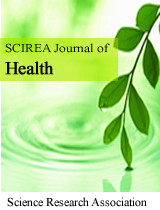EDUCATIONAL PROGRAM TO IMPROVE KNOWLEDGE OF CAREGIVERS REGARDING NUTRITIONAL STATUS OF UNDER FIVE-YEAR-OLD CHILDREN IN KUDUS, CENTRAL JAVA, INDONESIA
DOI: 10.54647/pmh330353 53 Downloads 12570 Views
Author(s)
Abstract
Introduction:
According to World Health Organization (WHO), at least 155, 52 and 99 million children under the age of five years were stunted, wasted and underweight worldwide respectively. In addition, around 6 million children were reported with stunting and wasting simultaneously. Malnutrition is clustered in developing countries, particularly in Africa and Asia. In South Asia, three countries of the region, India, Pakistan and Bangladesh, have particularly high prevalence of the condition. There are multiple factors that contribute to childhood malnutrition. The common determinants reported by several studies include socioeconomic inequalities, geographical differences, suboptimal feeding practices, household food insecurity, maternal literacy and childhood morbidities. Previous studies that have been conducted on childhood malnutrition in Pakistan were mostly based on hospital, schools, regional and community settings. Limited studies, that have reported the national level data, were either restricted to socio-demographic determinants or children less than two years of age. In addition, there is a paucity of literature regarding the correlates of all three indicators of childhood malnutrition (Sadaf Khan et al, 2019).
Method:
The research design used Quasi Experimental with pretest-posttest with control group design. The first phase of this research researcher measured Demografic Characteristic: social demographic, family support, economic status, and educational of parents. The second phase, researcher pre-test. The third step researcher give them educational program about nutritional status. The fourd phase, researcher post-test, researcher assessed their knowledge and attitude after having intervention.
Result:
The quantitative findings, post intervention educational programs to improve knowledge of nutritional status of caregiver under five-year-old in children, which means educational program of caregiver was significantly improve the knowledges of nutritional status among caregiver in children under five-year-old.
Keywords
Educational Program, Nutritional status, five-year-old, children
Cite this paper
Umi Faridah, Rusli bin Nordin, Vetriselvan Subramaniyan, Rusnoto, Muhamad Jauhar,
EDUCATIONAL PROGRAM TO IMPROVE KNOWLEDGE OF CAREGIVERS REGARDING NUTRITIONAL STATUS OF UNDER FIVE-YEAR-OLD CHILDREN IN KUDUS, CENTRAL JAVA, INDONESIA
, SCIREA Journal of Health.
Volume 8, Issue 2, April 2024 | PP. 40-47.
10.54647/pmh330353
References
| [ 1 ] | Akbar, H. (2021). Epidemiologi Stunting. Yayasan Penerbit Muhammad Zaini. https://books.google.co.id/books?id=fDxQEAAAQBAJ |
| [ 2 ] | Alfianika ninit. 2018. Ajar Metode Penelitian Pengajaran Bahasa Indonesia. Yogyakarta. Deepublish. |
| [ 3 ] | Alfianika. (2020). kemenkesRI., 1999(December), 1–6. |
| [ 4 ] | Asnuddin, A., & Hasrul, H. (2019). Analisis pola asuh keluarga terhadap status gizi balita. Jurnal Kebidanan Dan Keperawatan Aisyiyah, 15(1), 37–48. https://doi.org/10.31101/jkk.1001 |
| [ 5 ] | Bella, F. D., Fajar, N. A., & Misnaniarti, M. (2020). Hubungan pola asuh dengan kejadian stunting balita dari keluarga miskin di Kota Palembang. Jurnal Gizi Indonesia, 8(1), 31. https://doi.org/10.14710/jgi.8.1.31-39 |
| [ 6 ] | Hidayat. (2014). metologi penelitian. 15(2), 1–23. |
| [ 7 ] | Kemenkes RI. (2013). Gizi Anak dan Stunting. Penerbit LeutikaPrio. https://books.google.co.id/books?id=e9kZEAAAQBAJ |
| [ 8 ] | Kemenkes RI. (2020). PERATURAN MENTERI KESEHATAN REPUBLIK INDONESIA NOMOR 2 TAHUN 2020 TENTANG STANDAR ANTROPOMETRI ANAK. PMK No 2 Th2020, 68(1), 1–12. http://dx.doi.org/10.1016/j.ndteint.2014.07.001%0Ahttps://doi.org/10.1016/j.ndteint.2017.12.003%0Ahttp://dx.doi.org/10.1016/j.matdes.2017.02.024 |
| [ 9 ] | Maumanah. (2018). Monograf STUNTING : Fenomena ?? Hasil Penelitian Riset Keilmuan. Perkumpulan Rumah Cemerlang Indonesia. https://books.google.co.id/books?id=hHt4EAAAQBAJ |
| [ 10 ] | Maxwell. (2011). Penelitian Gizi dan Makanan Jilid II. 63. |
| [ 11 ] | Munggaran. (2012). Perbedaan Perilaku Makan Dan Pola Asuh Pemberian Makan Antara Balita Gemuk dan Balita Non Gemuk Di Kota Semarang. Journal of Nutrition College, 6(1), 43–51. http://ejournal-s1.undip.ac.id/index.php/jnc |
| [ 12 ] | Notoatmodjo. (2012). 87 Konsep dan Penerapan Metodologi Penelitian Ilmu Keperawatan.pdf. |
| [ 13 ] | Nursalam. (2012). Konsep Penerapan Metode Penelitian Ilmu Keperawatan. 12(7), 1–8. |
| [ 14 ] | Nursalam. (2016). METODOLOGI PENELITIAN09162019.pdf (p. 415). http://eprints.ners.unair.ac.id/982/1/METODOLOGI PENELITIAN09162019.pdf |
| [ 15 ] | Nursalam. (2017a). Konsep dan Penelitian Metodologi Penelitian Keperawatan : Pedoman Skripsi Tesis, dan Instrumen Penelitian Keperawatan. |
| [ 16 ] | Nursalam. (2017b). Metodologi Penelitian Ilmu Keperawatan : Pendekatan Praktis. Salemba Medika. |
| [ 17 ] | Rapar, D. (2014). HUBUNGAN POLA ASUH ORANG TUA DENGAN KEJADIAN STUNTING PADA BALITA DI PAUD AL FITRAH KECAMATAN SEI RAMPAH KABUPATEN SERDANG BEDAGAI TAHUN 2018 Oleh. Biomass Chem Eng, 3(2), ثقثقثقثق. http://journal.stainkudus.ac.id/index.php/equilibrium/article/view/1268/1127%0Ahttp://publicacoes.cardiol.br/portal/ijcs/portugues/2018/v3103/pdf/3103009.pdf%0Ahttp://www.scielo.org.co/scielo.php?script=sci_arttext&pid=S0121-75772018000200067&lng=en&tlng= |
| [ 18 ] | Sarea, S. (2014). Mengembangkan Pola Asuh Demokratis. Elex Media Komputindo. https://books.google.co.id/books?id=JuBMDwAAQBAJ |
| [ 19 ] | Sugiono. (2016). Metodologi Penelitian. Revista Brasileira de Ergonomia, 3(2), 80–91. https://www.infodesign.org.br/infodesign/article/view/355%0Ahttp://www.abergo.org.br/revista/index.php/ae/article/view/731%0Ahttp://www.abergo.org.br/revista/index.php/ae/article/view/269%0Ahttp://www.abergo.org.br/revista/index.php/ae/article/view/106 |
| [ 20 ] | WHO. (2013). HUBUNGAN POLA ASUH DENGAN KEJADIAN STUNTING ANAK USIA 6-23 BULAN DI WILAYAH PESISIR KECAMATAN TALLO KOTA MAKASSAR. |
| [ 21 ] | Widi R. (2011). Tingkat Pengetahuan Pelatih Bola Voli Tentang Program Latihan Mental Di Kabupaten Sleman Yogyakarta. Jorpres (Jurnal Olahraga Prestasi), 13(1), 53–59. https://doi.org/10.21831/jorpres.v13i1.12884 |
| [ 22 ] | Widoyoko, eko putro. (2012). Teknik Penyususnan Instrumen Penelitian. 13(4), 3–42. |
| [ 23 ] | Yusuf. (2018). Uji Validitas dan Reliabilitas Instrumen Penelitian Tingkat Pengetahuan dan Sikap Mahasiswa terhadap Pemilihan Suplemen Kesehatan dalam Menghadapi Covid-19. Jurnal Kesehatan, 13(1), 65. https://doi.org/10.26630/jk.v13i1.2814 |

